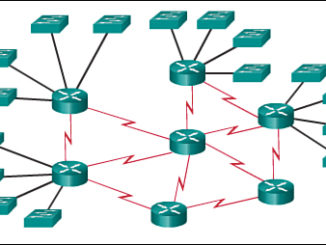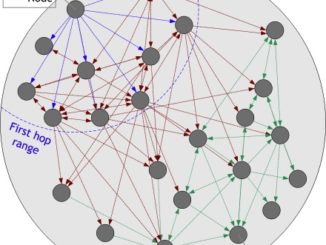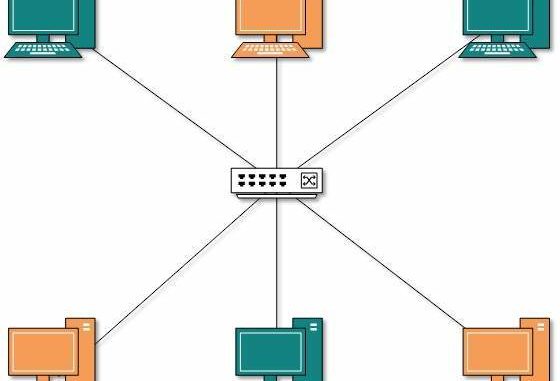
In this module we will focus mainly on LAN and its technologies. It is a local area network and is limited to a small geographical area. Some examples of LAN technologies are Ethernet, Token Ring and Wireless LAN using IEEE 802.11. LAN is usually a packet broadcasting network. It enables stations to communicate directly using a common physical medium on a point-to-point basis without any intermediate switching node being required. In this, data is mainly transmitted in packets. As it is a shared medium, only one station at a time can transmit a packet. Most commonly used communication technologies for LANs are Ethernet and Wi-Fi. Ethernet is a design that allows computers to converse with each other. Wi-Fi uses radio waves to associate computers to the LAN.
LAN can be wired as well as wireless. But most common is wired LAN which uses cables to connect the nodes. Twisted pair, coaxial and fibre optic cable are the most common form of network media used to transfer data. There are different LAN technologies which help the devices in the network to communicate with each other more efficiently. These technologies reduce costs by reducing the number of connections. They comprise of both software and hardware mediums. The internal data rates of LANs are usually much higher than WANs. Local Area Network protocols are mostly at data link layer (layer 2). IEEE which is the leading organization defines most of the LAN protocols.
In recent times, we have found examples of switched LANs also. Major ones are ATM LANs. They use an ATM network in a local area and Fibre Channel.
Module 3.1
Although we have entered into a wireless age, still physical cables are as important today as they used to be. One of the most important aspects of networking is the cable. Data needs to be sent via a physical medium. According to the network’s physical layer, topology, and size different type of cable can be used. Here we are going to discuss various cable types –
- Fibre Optic Cable
- Coaxial Cable
- Unshielded Twisted Pair (UTP) Cable
- Shielded Twisted Pair (STP) Cable
Fibre Optic Cable – They find their application usually in long distance applications and to provide high-speed data connection between various sections of a premise. Fibre optic cables are made up of optical fibres which carry light.
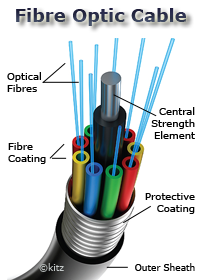
Figure 3.1 – Fibre Optic Cable
Despite being made up of glass, these cables are quite flexible and bend easily. As shown in the figure, the centre glass core is surrounded by several layers of protective materials. Although it is a costlier medium but its performance and speed has made it one of the most preferred medium for fast and reliable data transmission. One can find two major types of fibre optic cable industry standards viz. single-mode (100BaseBX standard) and multimode (100BaseSX standard). Single-mode is preferable used for long-distance telecommunications networks due to its comparatively higher bandwidth capacity. On the other hand, local networks normally use multimode due to its lower cost.
Fibre technologies have the potential to surpass the speeds of all other wireless technologies. There are a number of fibre technologies –
- Synchronous optical networks (SONET)
- Synchronous digital hierarchy (European standard)
- Dense Wavelength Division Multiplexing
- Passive Optical Network (PON)
- Optical Line Terminal (OLT)
- Optical Network Unit
- Splitters
Coaxial Cable – It is used to connect network devices for data transmission. At its center it has a single copper conductor. As an outer layer there is a braided metal shield. Both these have a plastic layer which provides insulation. The metal shield is helpful in blocking any outside interference from motors, fluorescent lights, and other computers. This makes it highly resistance to signal interference.
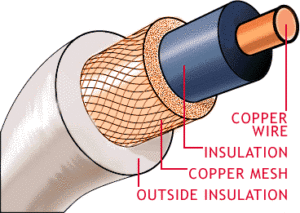
Figure 3.2 – Coaxial Cable
There are majorly two types of coaxial cables thin and thick. The large coax, which was usually yellow, is called as Thick Ethernet, or 10BASE5. The other one is known as Thin Ethernet or 10Base2. As the coaxial cable is stiff in nature, it is quite difficult to install and maintain. But it is used at various places due to low cost and higher bandwidth.
Twisted Pair Cable – In order to prevent electromagnetic interference the wires are wounded together in pairs in this. Twisted pair cables are of two types, shielded and unshielded. Here we are going to discuss both.
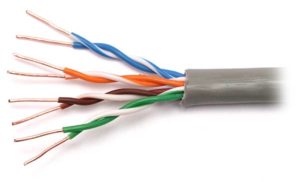
Figure 3.3 – Twisted Pair Cable
Unshielded Twisted Pair (UTP) Cable – It is one of the most commonly used type of cabling. UTP cables are easy to work with, install, expand and troubleshoot. It has found its application not only in computer networks but also in computer telephones. There are six different types of UTP categories and the one which suits the situation most can be used. These categories specify the type of copper wire used in the cable. The telephone and network wire as well as jacks are mostly made up of copper. The number (1, 3, 5 and so on) refers to the revision of the specification. They also specify the number of twists inside the wire. CAT1 is typically used for telephone wire. CAT2, CAT3, CAT4, CAT5/5e, CAT6 and CAT7 support computer network and telephone traffic.
Shielded Twisted Pair (STP) Cable – UTP is although quite cheap but is more susceptible to radio and electrical frequency interference. Shielded cables are a good solution for sensitive environment help to lengthen the maximum distance of the cables.
Copper Twisted Pair – There are different connectors within a common twisted pair including –
- Registered Jack 45 (RJ45): there are three types
- Standard Straight
- Crossover
- T1 crossover
- Registered Jack 11 (RJ11): used by telephone wires.
How to Create a Cable – In order to create a CAT6 cable, it is important to make sure all the cables is the same length by cutting off the end. An RJ45 connector has different channellings you must insert and different wirings coordinate to different channels and it’s important to make sure they all meet at the end. Finally, use a crimping tool to crimp down the cable which clicks things in place inside the connector head.
Cable Connector Types – There are different types of cable connectors for network cables. Here are a few –
- RJ45 – Registered Jack 45 (RJ45) is a standard type of physical connector for network cables. It has eight (8) pins to which the wire strands of a cable interface electrically.
- RJ11 – RJ11 connector is a bit smaller than an RJ45, it has 6 pins as opposed to 8. An RJ11 is used by standard analogue telephone services. These connectors can carry electricity and power over Ethernet.
- DB9 – DB9 connectors are serial port connectors and they allow us to connect devices. DB9s can transmit over an Ethernet cable, making data transmission easier.

